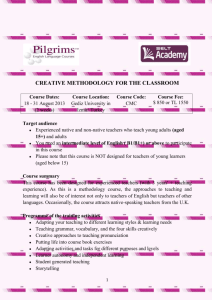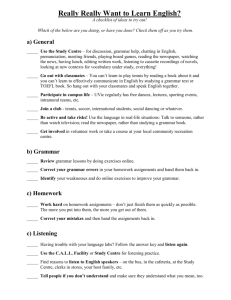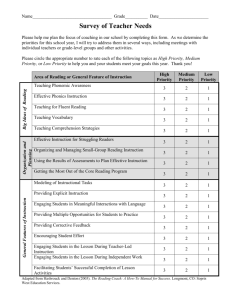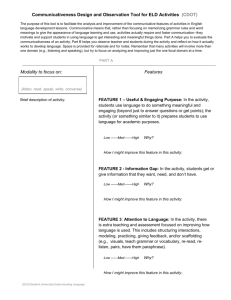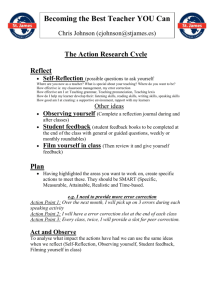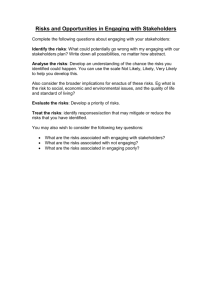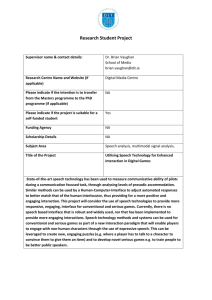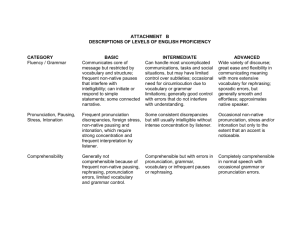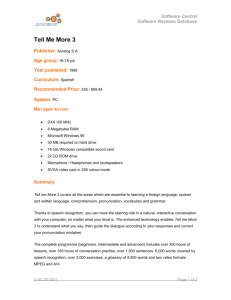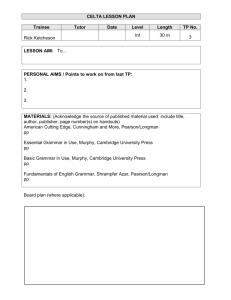TESOL Tips & Techniques Presentation
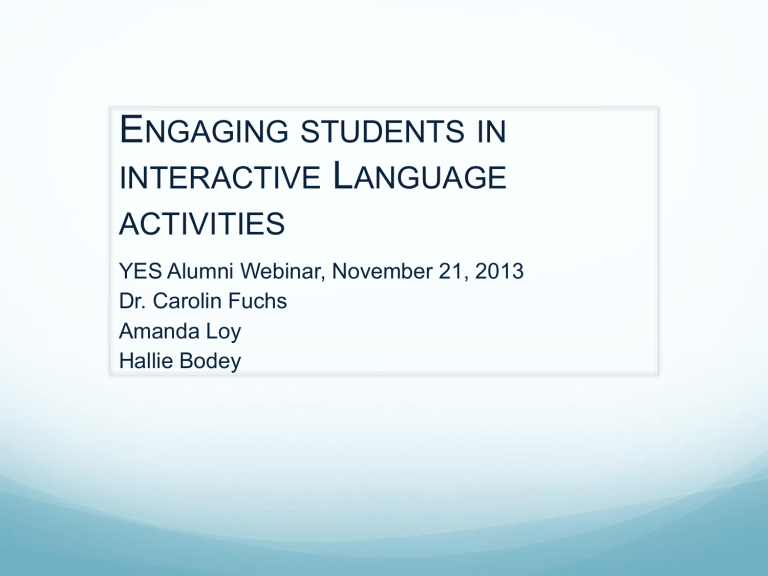
E NGAGING STUDENTS IN
INTERACTIVE L ANGUAGE
ACTIVITIES
YES Alumni Webinar, November 21, 2013
Dr. Carolin Fuchs
Amanda Loy
Hallie Bodey
AGENDA
• INTRODUCTION: Goal, objectives (10 min)
• SAMPLE ACTIVITIES: 4 skills, grammar, vocabulary, pronunciation
(15 min)
• RESOURCES (5 min)
• QUESTION & ANSWER (10 min)
GOAL
• Providing essential tips and tools for conducting introductory
English language classes in your community.
OBJECTIVES
1.
To understand the importance of interactive language teaching through a short lecture.
2.
To learn how to engage students in activities by analyzing samples.
3.
To effectively search for materials by exploring a number of online sources.
THE NUTS AND BOLTS OF
INTERACTIVE LANGUAGE TEACHING
The advantages of teaching language interactively (vs. other methods):
1.
Provides more language practice for learners through meaningful interactions and real-world contexts.
2.
Helps students focus on their language learning process and progress through reflective activities.
3.
Encourages student collaboration and interaction, which helps students learn from one another and have more fun.
4.
Combines language fluency and accuracy.
5.
Focuses on all components of communicative competence by integrating grammar and the 4 skills- listening, speaking, reading, writing.
Brainstorming Question
In the chat, brainstorm a list of characteristics for how you see your role as language teacher and how you view the role of the learner.
Time limit: 1 min.
ENGAGING STUDENTS: Teacher Role
DO
• Involve everyone
• Peer teaching
• Facilitate
•
Be the “sage on the stage” but the “guide on the side”
• Remember: “Pedagogy first, curriculum second, computers last” when it comes to using technology.
DON’T
• Lecture: Learners need to engage with one another in order to learn the language
• Over-correct errors
• Give answers immediately
•
Do the work for students
• Sit quietly
• Inhibit
• Use technology unless it adds value to your lesson
ENGAGING STUDENTS: Student Role
DO
• Actively interact with peers
• Demonstrate willingness to communicate
• Negotiate meaning in the target language
• Go out and “get” the language
• Take risks
• Ask questions
• Take on ownership of your own learning (learner autonomy)
DON’T
• S it quietly
• Expect a lecture about the language
• Expect teacher to correct every single error
• Expect teacher to use technology unless it adds value to the class
• Expect the teacher to “help” if you don’t ask
SAMPLE ACTIVITIES
(in combination with technology)
Please refer to the Word documents as we walk you through:
Ice Breakers:
Pair Interview (2-6 students)
Find Someone Who…(larger class, 7 + student)
Activities:
Pronunciation: Bingo
Speaking: Think-Pair-Share
Listening: Fill-in-the-blank with songs
Reading: Unscramble paragraphs (online generator link)
Writing: Chain Writing (stories, poems)
Grammar/Vocabulary: Word/Phrase of the Day
Think-Pair-Share Reflection Question:
What are your 2 favorite activities that we’ve introduced and why?
1. Think individually ( 1 min.
)
2. [ Pair (2 min.) ]
3. Share with class ( 5 min.
)
(For more information on instructions for Think-Pair-
Share, please see Word document.)
FINAL THOUGHTS FOR MAKING
ACTIVITIES MORE INTERACTIVE...
As you can see from the sample activities, any activity can be made interactive – keep in mind the following:
• Pair students up with one handout only
• Students have to answer their own questions in order to learn
• “Ask each other before me.”
RESOURCES
• Please refer to shared Word Document “Useful Online
Resources Webinar.”

